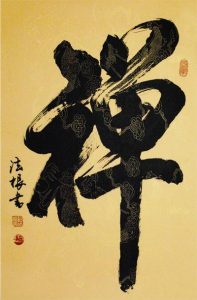Research
 My main area of academic specialization is the history of Buddhism in China, with additional professional expertise in related areas of religious and Chinese studies, and linguistic competence in Chinese and Japanese. Much of my work focuses on the Tang era (618–907), although some of my publication also cover other historical periods, including the religious landscape of modern China. While I can be identified as a specialist in Chan (Zen) Buddhism, I have also written about other traditions, such as Huayan and Tiantai. My work tends to be interdisciplinary and covers a wide range of topics, particularly Buddhist literature, doctrine, practice, and monastic institutions. Other areas of research interests include the history of Chinese religions, religious pluralism, contemplative practices, Chinese history, and the globalization of contemporary Buddhism. My publications include five single-authored books, two edited volumes, and numerous journal articles, chapters, and other shorter publications. I also have a new edited book coming out this summer.
My main area of academic specialization is the history of Buddhism in China, with additional professional expertise in related areas of religious and Chinese studies, and linguistic competence in Chinese and Japanese. Much of my work focuses on the Tang era (618–907), although some of my publication also cover other historical periods, including the religious landscape of modern China. While I can be identified as a specialist in Chan (Zen) Buddhism, I have also written about other traditions, such as Huayan and Tiantai. My work tends to be interdisciplinary and covers a wide range of topics, particularly Buddhist literature, doctrine, practice, and monastic institutions. Other areas of research interests include the history of Chinese religions, religious pluralism, contemplative practices, Chinese history, and the globalization of contemporary Buddhism. My publications include five single-authored books, two edited volumes, and numerous journal articles, chapters, and other shorter publications. I also have a new edited book coming out this summer.
My main research projects center on the writing of books, although I also have a number of publications in leading journals and edited volumes. My latest book, The Records of Mazu and the Making of Classical Chan Literature (Oxford 2015), explores the historical growth, makeup, and transformation of Chan literature in late medieval China. At a basic level, the book is concerned with the convoluted provenance, structure, contents, and history of transmission of particular group of texts that serve as primary sources for the study of Chan history and doctrine: the various records about Mazu Daoyi (709–788), one of the leading figures in Chan history, and the evolving religious images and literary representations of accomplished Chan masters conveyed in these and other related texts. In a broader sense, the volume sheds light on the principal historical trajectories and the multifaceted socioreligious exigencies that shaped significant process of textual production and canon formation in Tang and Song (960–1279) China.
The last book serves as a companion to my earlier book on Tang Chan, Ordinary Mind as the Way: The Hongzhou School and the Growth of Chan Buddhism (Oxford 2007). The first part of that book offers a systematic examination of the Hongzhou School’s rapid growth during the Tang era, and its rise to preeminence as the main bearer of Chan orthodoxy. That is accompanied with an analysis of the Hongzhou School’s doctrines and practices, set against the backdrops of the relevant canonical models, doctrinal frameworks, and religious milieus of Tang China.
My latest books is an edited volume, Communities of Memory and Interpretation: Reimagining and Reinventing the Past in East Asian Buddhism. The book is scheduled for publication in the summer of this year, as part of the Buddhist Studies Series published by the Center for Buddhist Studies, University of Hamburg. I also work on a book titled Chan, Tiantai, and the Evolution of Chinese Buddhist Monasticism, which deals with Buddhist ideals and institutions. Its primary area of concern is the impact of the Chan and Tiantai schools’ growth on the evolution of monasticism in China, with a primary focus on the Sui (581–618), Tang, and Five Dynasties (907–960) eras. The book, which I plan to finish in 2018 and publish with Oxford, includes annotated translations of several key texts about monastic discipline produced by Chan and Tiantai monks, including Zhiyi’s (538–597) Li zhifa (Establishing Regulations) and Guishan’s (771–853) Guishan jingce (Guishan’s Admonitions).
My other books include The Wiley Blackwell Companion to East and Inner Asian Buddhism (Wiley Blackwell 2014), a large edited volume that is part of the prestigious Blackwell Companions to Religion series, and Introducing Chinese Religions (Routledge 2009). The second volume was very well received and is used widely as a required reading at many leading universities in Europe, Asia, and the Americas; it was also published in a Portuguese translation. In all, three of my books have been translated into foreign languages (German, Polish, and Portuguese), plus shorter publications into Chinese and Turkish. These publications offer further testimony to my international renown and the broad impact of my scholarship.
Recent examples of other publications include a comprehensive (over 20,000 words) article on Chan meditation, “Conceptions and Attitudes towards Contemplative Practice within the Early Traditions of Chan Buddhism,” in the Journal of Chinese Buddhist Studies (2015), and a historical survey of Buddhism in modern China, “Contemporary Chinese Buddhist Traditions,” in Michael Jerryson, ed., Oxford Handbook of Contemporary Buddhism (2016). Later on, I plan on writing a number of additional books, including (1) a comprehensive history of Buddhism in China, to replace Kenneth Ch’en’s dated but still widely used Buddhism in China (Princeton 1964), (2) a religious history of modern China, (3) a survey of Buddhist contemplative practices, and (4) a history of Chan/Zen Buddhism.